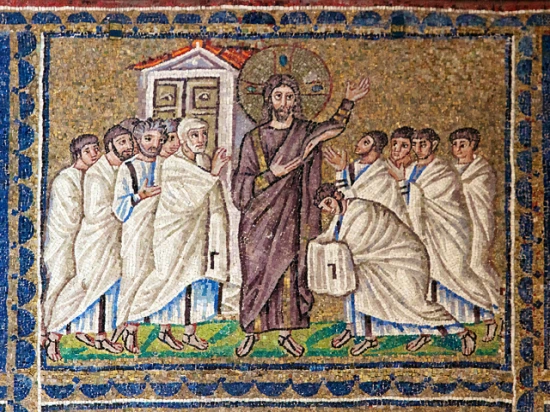3207. 'And she took a veil and covered herself means appearances of truth. This is clear from the meaning of 'a veil', with which brides used to cover their faces when they first saw their bridegroom, as appearances of truth. For among the ancients brides represented affections for truth and bridegrooms affections for good. Or what amounted to the same, they represented the Church which was called 'the bride' by virtue of the affection for truth, while the affection for good received from the Lord was 'the bridegroom', on which account the Lord Himself is called the bridegroom in various places in the Word. Brides veiled their faces when first approaching their bridegroom to represent appearances of truth. Appearances of truth are not truths in themselves but are such as have the appearance of being truths, regarding which something is said below. The affection for truth cannot approach the affection for good except by means of appearances of truth, and these it does not discard until it is joined to it. Once joined it becomes truth wedded to good and becomes genuine truth to the extent the good is genuine.
[2] Good itself is holy because it is the Divine proceeding from the Lord, and flows in by a higher path or entrance within man. But truth, so far as its origin is concerned, is not holy because it flows in by a lower path or entrance, and at first belongs to the natural man. But when it is raised up from the natural man towards the rational man it is gradually purified, and at first sight of the affection for good is separated from facts, takes to itself the appearances of truth, and in this guise approaches good. This is a sign of the nature of its origins and that it could not endure the first sight of Divine good until it had entered the bridegroom's chamber, which was the sanctuary of good, and the two had become joined together. At that point truth no longer beholds good from or through appearances, but is beheld by good without any appearances.
[3] But it should be recognized that no truths with man, nor even with an angel, are ever pure, that is, free of appearances. Every single one is an appearance of the truth, but appearances are nevertheless accepted by the Lord as truths if they hold good within them. To the Lord alone do pure truths, being Divine truths, belong - for as the Lord is Good itself, so is He Truth itself. See however what has been stated already about truths and appearances of truth:
The coverings and the veils of the Tent of Meeting meant appearances of truth, 2576.
Truths with man are appearances steeped in illusions, 2053.
Rational concepts are appearances of truth, 2516.
Truths exist within appearances, 2196, 2203, 2209, 2242.
Divine good flows into appearances, and even into illusions, 2554.
Appearances of truth are adapted by the Lord as though they were truths, 1832.
In the Word things are expressed in accord with appearances, 1838.
What appearances are however becomes quite clear from those places in the Word where things are expressed according to appearances. But there are different degrees of appearances of truth. Natural appearances of truth are for the most part illusions, but when they reside with people who are governed by good they ought not in their case to be called illusions but appearances, and even in some respects truths, for good is held within them which holds the Divine within itself and causes them to be different in essence. Rational appearances of truth however are more and more interior. These occur in heaven, that is to say, they exist with angels who are in heaven; see 2576.
[4] To have some idea of what the appearances of truth are let the following serve by way of illustration:
i. Man supposes that he is reformed and regenerated by means of the truth of faith, but this is an appearance. He is reformed and regenerated by means of the good of faith, that is, by means of charity towards the neighbour and love to the Lord.
ii. Man supposes that because truth teaches, truth enables him to perceive what is good; but this is an appearance. It is good that enables truth to perceive, for good is the soul or life of truth.
iii. Man supposes that truth leads to good when he lives according to the truth he has learned; but it is good which flows into truth and leads truth towards itself.
iv. To man it seems as though truth perfects good, when in fact good perfects truth.
v. To man it seems as though the good actions of life are the fruits of faith, but they are the fruits of charity.
From these few illustrations one can know in some measure what appearances of truth are. Such appearances are countless.







